
Enterprise resource planning (ERP) is a type of business software that helps organizations manage their daily operations. ERP systems are designed to be used by large businesses and can be very complex.
However, many organizations are not using ERP systems to their full potential, which can lead to organizational inefficiency and wasted resources. ERP adoption challenges are often to blame for this lack of utilization and are becoming increasingly prevalent as businesses strive to adopt more sophisticated software.
Change management and ERP adoption go hand in hand. To successfully implement an ERP system, an organization must carefully consider how the change will impact people within the company. This means that everyone from the C-suite down to the front-line workers must be on board with the project and invested in its success.
An ERP system for large companies can rapidly streamline many internal processes and monitoring. They have the potential to make manual tasks simple and support decision-makers with up-to-date information about the organization.
But a successful implementation is often hard to achieve. Strategies to roll out these expensive and complex systems can fail dramatically, inflicting businesses with millions of dollars in unexpected costs.
Enterprise Resource Planning systems are so complex that ERP implementation challenges will arise even with good planning. Businesses can learn from consultants’ previous mistakes and use effective project management to let an ERP project drive efficiency forward.
This article will deliver a comprehensive overview of ERP adoption while demonstrating why it’s worth streamlining digital adoption efforts. We will also explain why ERP system implementation can be so challenging and what businesses can do to prepare for a new system.
What Is Enterprise Resource Planning (ERP)?
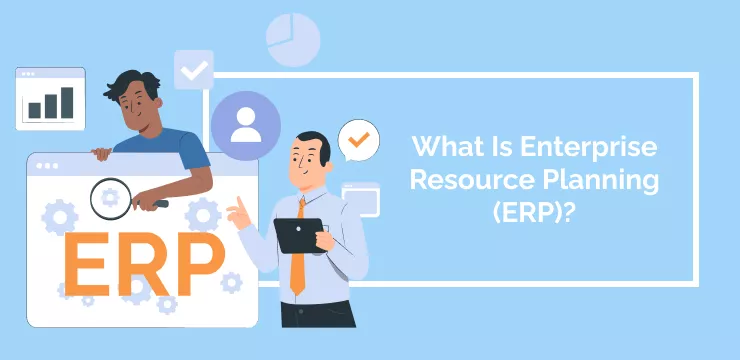
An ERP system aims to systematically collect and retain data across a business. Major ERP providers have a daunting range of functions, potentially covering human resources, inventory, supply chain, etc.
An ERP is not the only large-scale software system that a significant company will need. ERPs focus on the resources that are available to an organization. As such, they will not typically collect information about customers – although there are ways to integrate CRM with an ERP.
Businesses of all sizes across all industries can benefit from using an ERP. Smaller companies will benefit from the convenience of integrating different data streams, while the largest organizations would struggle to function without an effective ERP system.
What’s The Difference Between ERP, CRM, HCM, and MRP?
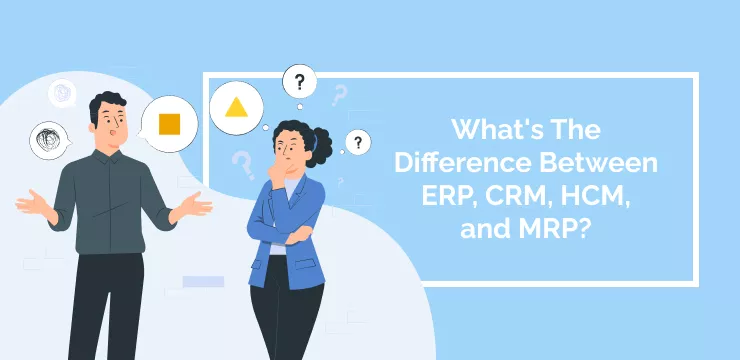
In some ways, the aims of ERP are similar to other organization-wide software packages: but there are important differences.
Other software may have functions that overlap with ERP capabilities. For example, Human Capital Management (HCM) systems deal specifically with aspects of hum,n resources. Some businesses will keep this separate from their ERP processes, but HCM functions may be included as one set of functions within an ERP package.
Manufacturing businesses are likely to use some form of Material Requirements Planning software (MRP). Indeed, this forerunner of ERP software deals specifically with manufacturing processes.
By contrast, Customer Relationship Management (CRM) deals with the customer-facing aspects of business operations. Although there may be opportunities to integrate a CRM package with ERP software, they involve fundamentally different elements of the business. So while most large companies will need an ERP and a CRM solution – they aren’t offered as an integrated package.
ERP solutions encompass many processes, giving them a significant advantage over other internal tracking services.
What Business Processes Does An ERP Cover?
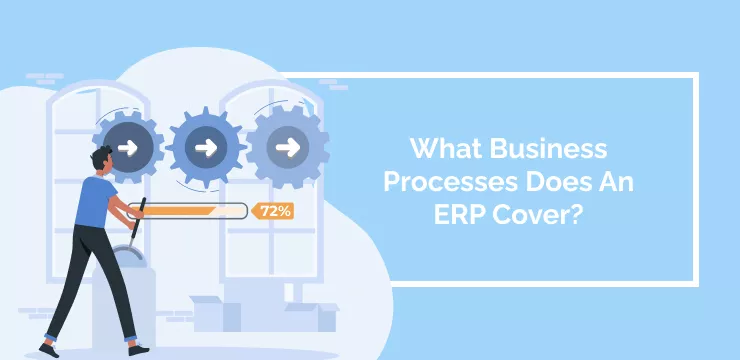
An ERP covers business needs across a complex organization. Some areas include:
- Human resource management (including onboarding, offboarding, employee data, and payroll)
- Performance Management.
- Keeping track of financial data.
- Supply chain management.
- Data visualization.
- Fulfillment processing.
- Manufacturing processes.
Only the largest businesses would expect to use these systems all the time. As such, a successful ERP implementation might exclude one business process or another.
How Does ERP Software Improve Organizational Efficiency?
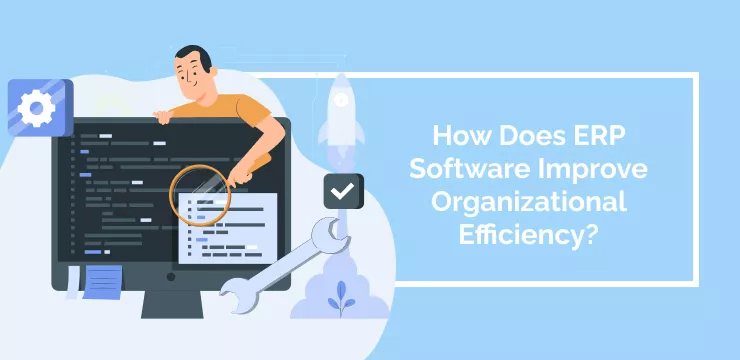
Efficiency is at the heart of an ERP’s purpose. With the ability to routinely save staff from hours of work and confusion, it’s no wonder that major companies are willing to invest heavily in this technology.
Some of the ways that ERP software can improve efficiency include the following:
- Improve workflow. With complete knowledge of employee productivity, an ERP can help you identify points where your systems aren’t working well. The software provides all the knowledge executives need to make the warehouse work well.
- Automation of routine tasks. Especially valuable for anything involving money – invoicing, payroll, and accounting; deducting tax from employees; ensuring that everyone is working an appropriate number of hours.
- Reduced confusion around data. With one central source of information, there is no question about where managers need to go to find out about staff, inventory, or sales.
- Lower risks around data security. An ERP gives one repository to keep safe. Organizations may have held employee information on several systems in the past. A diffuse storage system exposes the data to many possible breaches.
- Identify delays (and handle them). When raw materials or finished products are moving through a supply chain, ERP software will help to see any problems – as soon as they arise.
With this wide range of functionality, ERP software might be a no-brainer. However, ERP packages can be challenging and extremely expensive to implement.
What Is ERP Adoption?
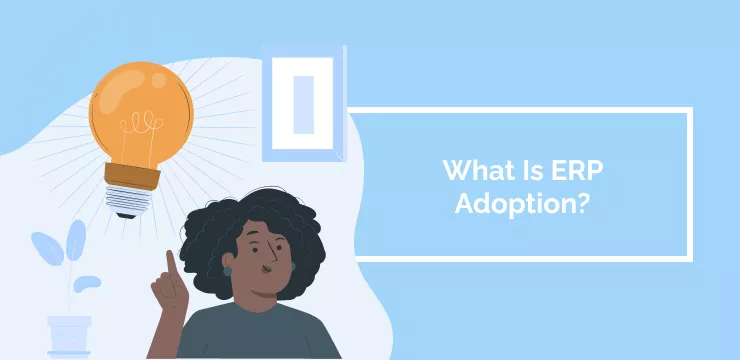
ERP adoption is when an organization procures, rolls out, and uses a new ERP system. As an ERP solution reaches every part of the business, its implementation can be highly complex.
A new ERP can have an impact on the nature of the business itself. Mary Dunaway writes, “ERP implementations are not just COTS (commercial of the shelf applications), but are radical changes to a company’s business process, IT infrastructure, and strategic and tactical goals.”
An ERP consultant will start an adoption procedure by identifying an appropriate methodology. This could be vendor-led, where a software company uses its product knowledge to ensure an effective roll-out. Alternatively, a company-driven methodology will adapt internal roll-out processes to include ERP implementation. A joint venture on methodology allows groups of companies to decide on a strategy collectively.
There are many more options when it comes to the deployment of ERP software.
A company might choose a ‘big-bang’ deployment, in which every user switches to the ERP on a given day. The risks are high: but with a make-or-break deadline, a company is forced to do its utmost to get things right.
Alternatively, the rollout could be phased in many ways: by module, by business area, by location, by geographical location, or by some combination. These forms of deployment come with lower risks and allow some time for testing and refinement before bringing all work areas on board.
When Is The Right Time To Adopt An ERP?
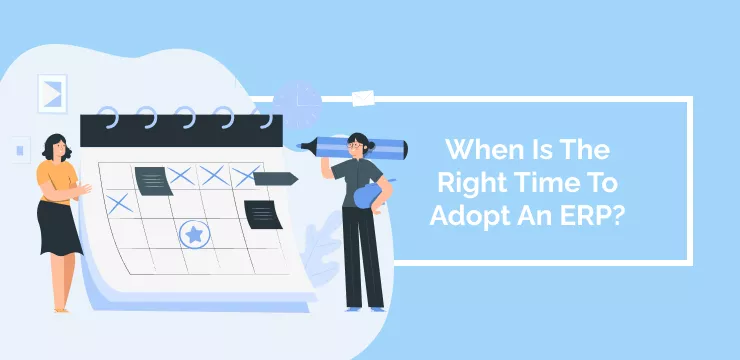
Implementing ERP software is not necessary for every business. Brand-new businesses are unlikely to need such wide-ranging software. Neither would small enterprises need to keep such a close watch on their resources.
According to Mckinsey, only 20 percent of companies capture more than half the projected benefits from ERP systems. When companies take on more customers, their legacy systems may lead them to make errors, which is bad for business.
Another measure of needing an ERP platform is when staff spends a lot of time gathering data.
The Importance Of Implementing ERP Initiatives
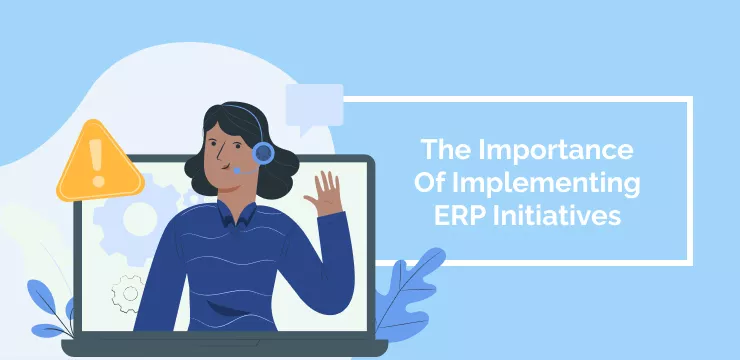
When a business finds that its internal processes are inefficient, there’s no question that ERPs can be drivers of exceptional levels of organizational change. They can offer a significant ROI while making life much easier for staff at all levels.
However, it’s also well known that a wrong approach to ERP implementation can be disastrous. More broadly than the famous failures, further research by McKinsey shows that only a fifth of companies realize more than half of the benefits they should be getting from their ERP systems.
While organizations can expect an ROI, the initial outlay can be costly in technical terms and in the approach to change management. An ERP implementation process must involve the whole company ensuring staff buy-in from top to bottom. A recent report by Market Research Engine states that the Enterprise Resource Planning Market is expected to exceed more than US$ 49.50 Billion by 2027. Even though only 26% of employees report using their ERP, it’s at the center of worldwide digital adoption initiatives.
Improving enterprise digital adoption must be a top priority for any organization, as it drives productivity, customer experience, and overall growth.
There are several strategies that companies can adopt to improve digital adoption with their ERP systems. These include providing extensive training, creating user-friendly interfaces, and implementing AI tools such as chatbots or virtual assistants. By focusing on these key areas, organizations can ensure that their staff are comfortable using their ERP systems and can take full advantage of their benefits.
There are also a number of factors to consider when planning an ERP implementation. These include choosing the best-fit solution, mapping out your existing processes to ensure a smooth transition, and working with partners and suppliers who can help you plan and execute changes across the business.
Some organizations engage in digital transformation programs related to their ERP system, focusing on automation and process improvement. This can help unlock the full potential of an ERP deployment by ensuring that all parts of the organization are working together and using their digital tools as effectively as possible.
Overall, whether you’re looking to improve enterprise digital adoption or planning an ERP implementation, it’s essential to approach the process with a clear goal and focus on critical areas like user experience and change management. With the right strategies in place, you can ensure that your ERP system delivers its full potential and drives significant improvements to your business.
What Makes ERP implementation challenges?
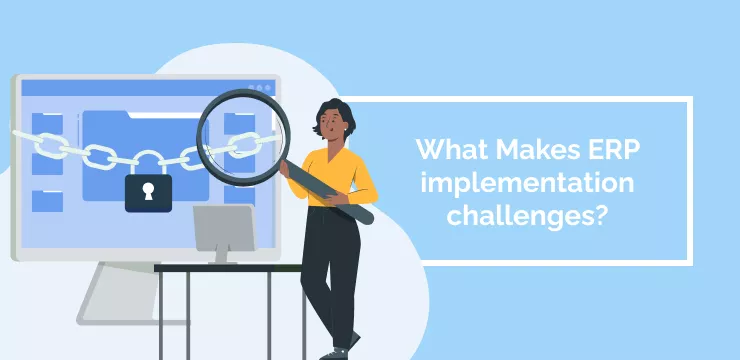
Problems with ERP implementation are common across sectors. A recent report by the Technology Evaluation Center found that as much as 50% of implementations fail on the first attempt and usually cost considerably more than anticipated. And more than half of ERP users experience problems when going ‘live’ with a solution.
Many of the challenges will be in the details of an implementation strategy. However, some of the critical problems are in the following areas:
- ERP systems are a technical challenge. They need to cover diverse business processes across an entire organization. Implementing ERP platforms requires high-level technological know-how – from leaders and the implementation team.
- New ERP systems can be met with resistance from staff. Indeed, the technical aspects of ERP implementation are far easier to achieve than stakeholder buy-in ]. Ordinary staff may not see beyond a current process that does not provide them with any problems. So it’s not sufficient for a technical team to ensure user access to the ERP across an entire business. A lot of planning is required to ensure staff buy-in.
- When ERP implementation fails, it stands to fail very badly. Without careful planning, companies can have millions of dollars flowing down the pan. Organizations like Nike, the US National Grid, and Haribo can tell you the pain of millions of dollars in lost revenue. Litigation over ERP failure is not unusual.
For software that’s so useful, there are plenty of ERP risks, and the history of ERP implementations gives us plenty of lessons to learn from. Fortunately, we can learn from the mistakes others have made to avoid repeating their problems.
Ten key ERP Implementation Challenges
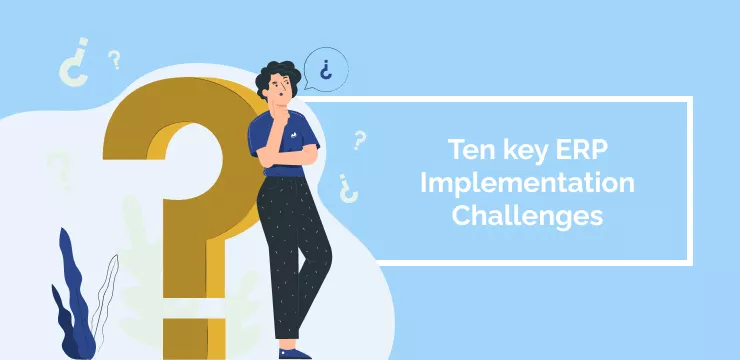
ERP implementation fails when companies seek unrealistic targets, use inappropriate vendors, or do not adequately engage their staff. We will now introduce some of the top challenges companies will face.
- Lack of Investment From Executives and Top Management

Even if the ERP implementation has strong leadership from within the company – the wider management team cannot always be relied on to drive ERP adoption.
If managers are cynical, wary, and unprepared for the new system, they will pass that reticence on to rank-and-file staff. There’s not much hope of achieving a successful ERP implementation without engaging all staff members.
- A Lack of Adoption and Wider Organizational Strategy
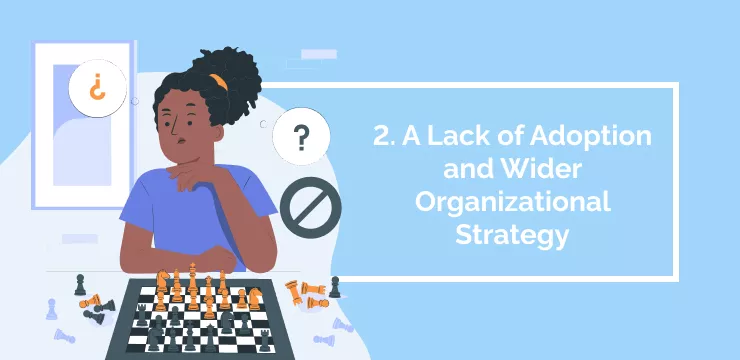
A business will take on an ERP to handle growth and improve productivity. But ERP implementation will be a waste of money if it is not evenly adopted by staff across the organization.
Perhaps the finance team is finding the ERP system makes their lives a lot easier: but inventory controllers are unwilling to update their legacy methods, insisting that ‘it’s always been done this way.’
Or, maybe staff don’t like logging in to the automated HR system, preferring to make time-consuming requests in person. These problems are frustrating. They undermine the whole ERP project. Moreover, they are hard to monitor effectively.
- Failure To Choose The Right Vendor

The human aspect of digital adoption creates the greatest ERP implementation challenges. However, technical issues can creep in at every stage of implementation: nowhere more so than at the very outset of an ERP project.
There are many ERP vendors to choose from. There is no strict ranking of vendors: the best choice will be determined by the size and needs of an organization.
Vendors are typically divided into ‘tiers’ of service that indicate the product size they can offer.
- Only a handful of ‘tier 1′ ERP solutions cater to the largest companies’ needs (bringing $500 million or more a year). Vendors like Microsoft, Oracle, and SAP will likely be the only choices for organizations like Amazon, Toyota, or government departments.
- However, plenty of ‘tier 2’ vendors can help with midsize companies (making around $50million-$500million a year). Infor, Epicor, Priority, and IFS are examples, though many others exist.
- For smaller companies (making up to $50 million a year), there is a plethora of so-called ‘tier 3’ suitable for businesses working in a particular niche. Jeeves is specific to Sweden, for example.
The process of choosing the right ERP solution could take months in itself. When companies rush this step, they will struggle to go back and start over.
- Imperfect Data Migration
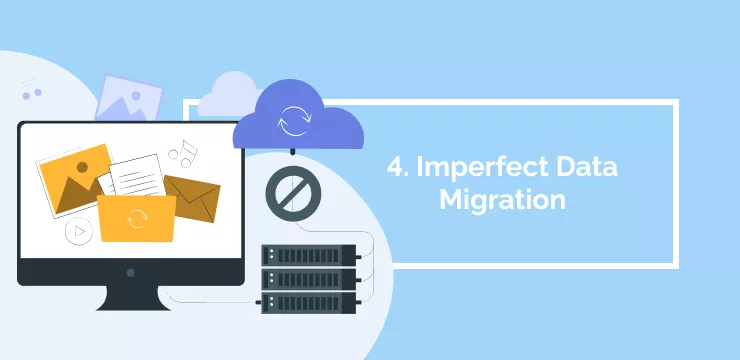
Data is at the heart of any ERP implementation. After all, the whole point of the project is to keep data in one easy-to-find location.
But getting all of a company’s existing data into one place is one of the significant challenges of ERP. Data migration from legacy software, spreadsheets, databases, and other locations may result in irrecoverable losses.
Research suggests that over 50% of companies manually transfer data from their old systems to new ones, while a third rely on an API. Without careful planning, data issues could become one of the core ERP implementation challenges businesses face.
Nonetheless, data migration can be a major opportunity. It’s a chance to weed out any idiosyncratic systems – and get a new solution that will take a company through years or even decades of growth.
- Poor Organizational Communication

An ERP project may be a considerable undertaking. But it is not the only transformation company employees will deal with. In most organizations, things are changing all the time. Whether it’s a new initiative, the introduction of new technologies, or the launch of a digital transformation program, there are always opportunities to embrace change and improve performance.
A digital adoption strategy directly impacting the bottom line is critical to organizational success. Whether you’re looking to improve employee communication, actively build engagement, or optimize performance, focusing on digital adoption is vital.
If a company’s upper management isn’t careful about the timing and format of its announcements, employees will ignore them. Too many emails, notifications, and project updates can lead to decision-makers bombarding staff with information overload.
The key to overcoming this challenge is providing employees with regular, relevant updates synchronizing with their workflows and focusing on outcomes. For example, using a digital adoption platform with real-time notifications and seamless integration, employees can be informed when they need to know something without being overwhelmed by information.
- Ambiguous Compliance Instructions

Once the new ERP system is in place, users will not intuitively know how to use the system. Of course, these matters will be covered in any adequate training course. But when staff go through lesser-known processes or are forced to re-train on embedded procedures, creating complete clarity is a challenging task.
Clear written instructions for all use cases could be part of a suitable adoption strategy.
But even better, a digital adoption platform can ensure that there is no ambiguity in the way that users input their data.
- Employee Training and Retention

As mentioned above, technical problems are only half the story- an organization’s employees have got to understand how to use the new ERP platform.
Leaders in digital adoption recognize that training and development look pretty different now than they did a few decades ago. And when it comes to ERPs, a training and employee retention strategy must move with the times.
Employees may feel disenfranchised when they are faced with automation and monitoring. If poorly handled, the ERP implementation may mean some staff work elsewhere.
However, most people enjoy working for companies that have a developmental mindset. With the right opportunities, businesses can create a divisive employee training program that fuels digital transformation and meaningfully reach digital maturity.
- Change Resistance

Technophobic resistance can come from all levels and demographics. Moreover, staff locked into their small role may not see why a new system is necessary. To them, implementing ERP will feel like a cumbersome and tedious exercise.
Leaders in large organizations will already have experience with excellent change management practices. There are already some great change management models, from change management certification courses to popular frameworks such as the Kotter model.
An ERP system implementation will test the executive’s leadership skills. With a strong vision, businesses of all sizes can expect the ERP project to be a success.
- Maintenance Costs of ERP Systems
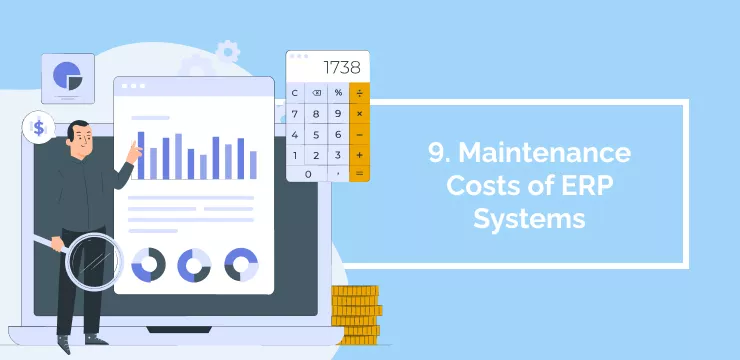
The maintenance costs attached to ERP implementation will vary dramatically from business to business – both for the initial outlay and the costs incurred by the system over weeks and months.
A decision to take on a cloud ERP or a locally-hosted version will significantly affect ongoing costs. Global Newswire found that the global cloud-based ERP market share is expected to grow from $36.82 billion in 2021 to $41.73 billion in 2022 at a compound annual growth rate (CAGR) of 13.3%.
Over 60% of companies now adopt cloud-based ERP services, with the vast majority operating on a SaaS model. It’s more common than ever to use a cloud-based ERP system – though that still doesn’t mean they’re suitable for everyone.
It is surprisingly common for an ERP project to cost dramatically more than planned. Implementing excellent digital transformation strategies will ensure that costs are as predictable as possible.
- Monitoring End-User Adoption Success
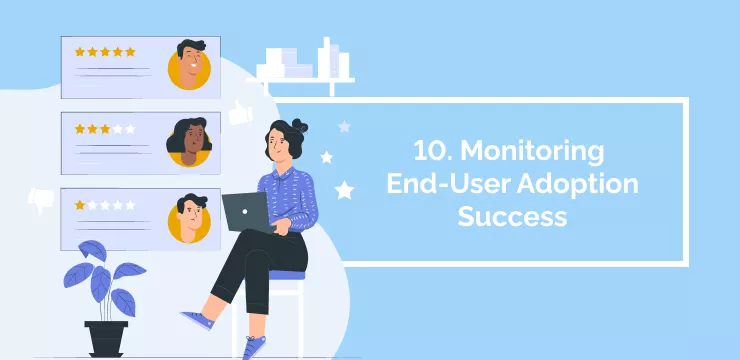
Even a broadly successful implementation may still not reap all the possible benefits of ERP.
Let’s assume that staff is invested in the ERP solution. Top executives are keen; middle managers see the value, and all system users recognize how it will improve their jobs.
Although this sounds like an ideal solution, it is difficult to know how well the staff uses the software. Staff who trust their line managers can be counted on to provide appropriate feedback; those managers should be tasked with collecting and acting on such input.
But this is another area where a digital adoption platform may provide reliable feedback channels that others simply cannot. A DAP is not just another costly add-on – it’s one of the only ways the ERP project team can convincingly understand the patterns of ERP usage.
Solutions For Solving ERP Adoption Challenges
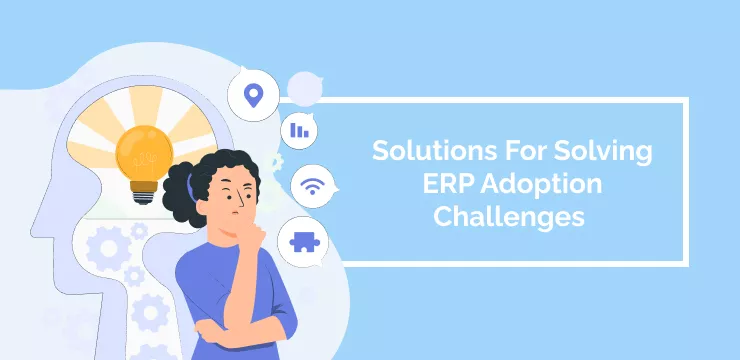
The project team in charge of an implementation process should think carefully about all the challenges outlined above. With good planning and proper training, there’s no need to worry about implementation challenges.
- Undertake a full risk assessment before initiating the project

No one wants to imagine the worst-case scenarios. But this is precisely what will help with a successful ERP implementation. By looking seriously at the delays and problems that could occur during implementation, a business can avoid them.
- Taking internal control of the ERP project

An ERP implementation will almost always use a team of contractors – from the vendor or an ERP consultant firm.
With such a significant outlay on human capital, staff can become complacent about their role in the process. Yet leadership for the ERP project must come from within the company, too, before and during the process.
A vendor or consultant may want to push their implementation plan that doesn’t connect with the missions of the business. As such, the ERP project team needs to include internal members who can direct the system implementation while prioritizing the specific needs of their business.
- Make use of independent technical support

An implementation partner is an essential player in almost any ERP project.
However, whether they are vendors or consultants, they will be balancing the needs of the business with their strengths and services.
An independent advisor can provide impartial technical support to keep an eye on things. It’s possible that an implementation partner might not always have the business’s best interests at heart.
- Time the launch well

The most significant ERP implementation issues result from fundamentally misguided project management goals. Businesses must assume that users will find new software challenging and factor this into their strategies.
One key example is Hershey’s. In the 90s, they attempted to implement a new ERP system in only 30 months – and then went ‘live’ in July, one of the busiest times of the year for orders.
The outcome? Nearly 20% drop in quarterly sales and a significant fall in their stock value. Hershey’s may have had the inventory and material infrastructure to supply all their orders. But with staff unclear on how to use the new system, it was impossible to get candy to customers.
FAQs Before Implementing An ERP
How Much Does Initiating An ERP Cost?
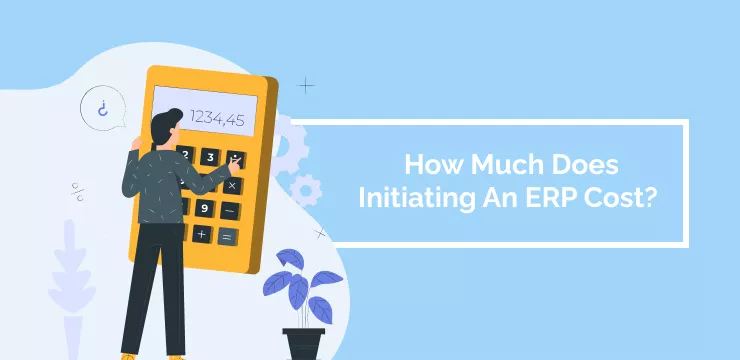
The cost of initiating an ERP project can vary dramatically.
Some factors will include the complexity of the business, the number of users adopting the software, how many locations the ERP will be implemented, the number of departments, and the currencies in which the business operates.
It will be tough to estimate the real cost of an Enterprise Resource Planning solution without expert support. The sales teams at ERP vendors or an ERP consultant will be best placed to give clear guidance.
How Long Does It Take To Initiate An ERP?
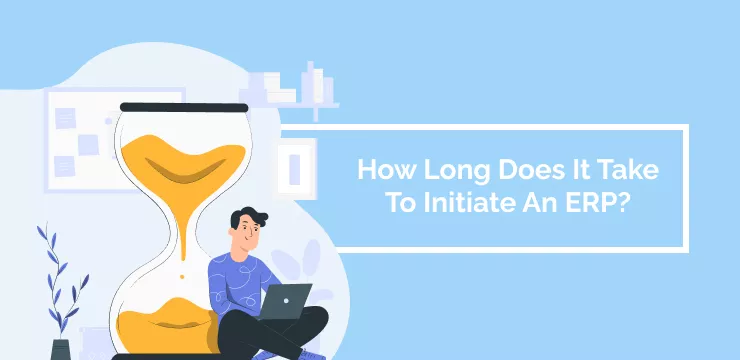
Some consultants estimate that an ERP implementation takes around 18 months. They are straightforward, however, that every implementation is different, bringing unique challenges.
Does an ERP System Have To Be Updated?
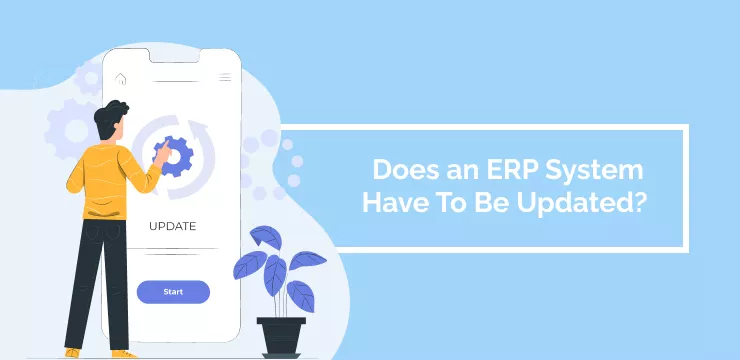
Like any software system, an ERP will eventually need updating. This will likely happen after continued growth or when a business expands in unexpected directions.
What Potential Issues Could Arise After Implementing An ERP?

A good consultant can foresee the vast majority of issues that may arise after implementing an ERP. Whether that’s the date of ‘going live,’ internal resistance, or executive buy-in – most issues can be planned for.
Unexpected problems can naturally come up. Staff may have been enthusiastic at the planning stage but don’t like the result. The cost of maintaining the system may be greater than planned. Some modules of the system may struggle to work with one another.
What Are the Criteria Of A Successful ERP Adoption?

A company will get into an ERP project with various hopes of innovation, efficiency, standardization, and cost savings, to name four.
Evaluating an ERP implementation will naturally take time. However, it can be worth the effort as an ERP system is a significant investment that will impact your business for many years to come.
Gartner’s research points out that amongst these major areas, most companies find standardization and costs most interesting (as they are easier to measure), even though innovation and efficiency may have a bigger impact on their business. However, it can be worth the effort as an ERP system is a major investment that will impact your business for many years to come.
This means that to get the most out of your ERP implementation, you need to take a holistic approach that considers all aspects of your business. You need to evaluate how it will impact your finances and operations and what kind of changes it will bring about in terms of innovation, efficiency, and collaboration within your organization.
WalkMe Team
WalkMe spearheaded the Digital Adoption Platform (DAP) for associations to use the maximum capacity of their advanced resources. Utilizing man-made consciousness, AI, and context-oriented direction, WalkMe adds a powerful UI layer to raise the computerized proficiency, everything being equal.



